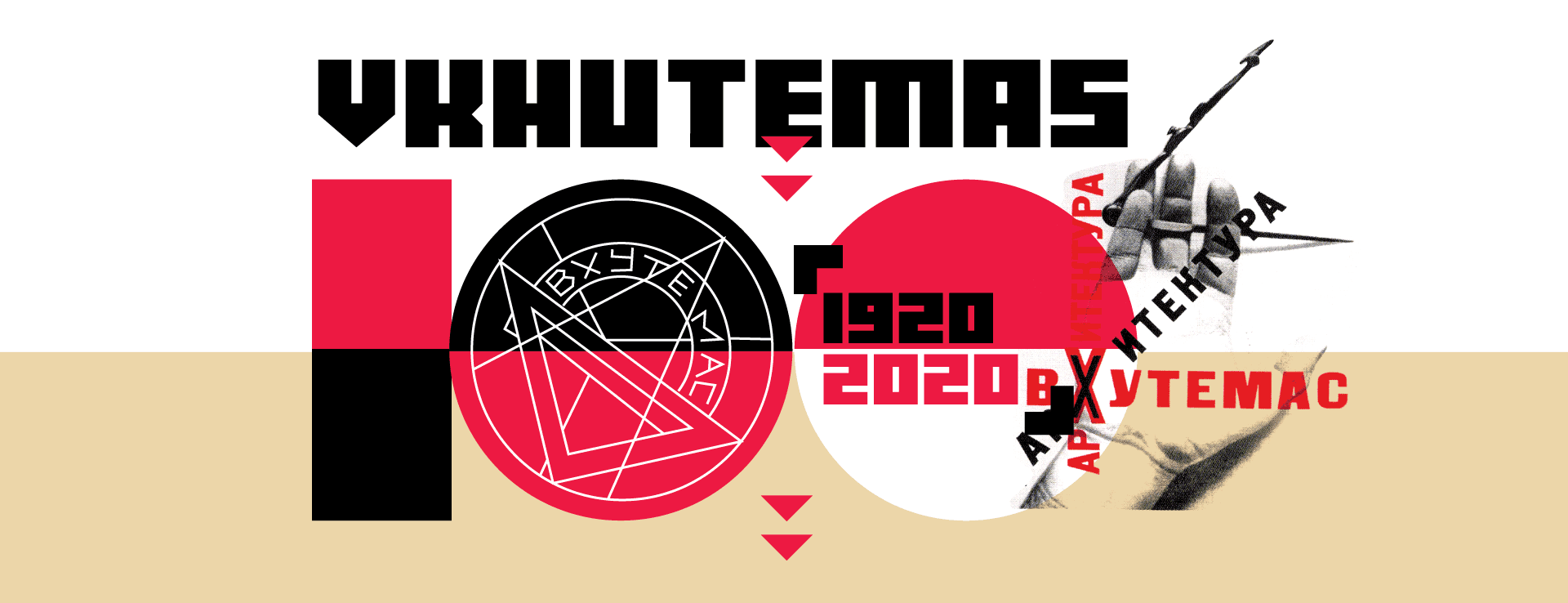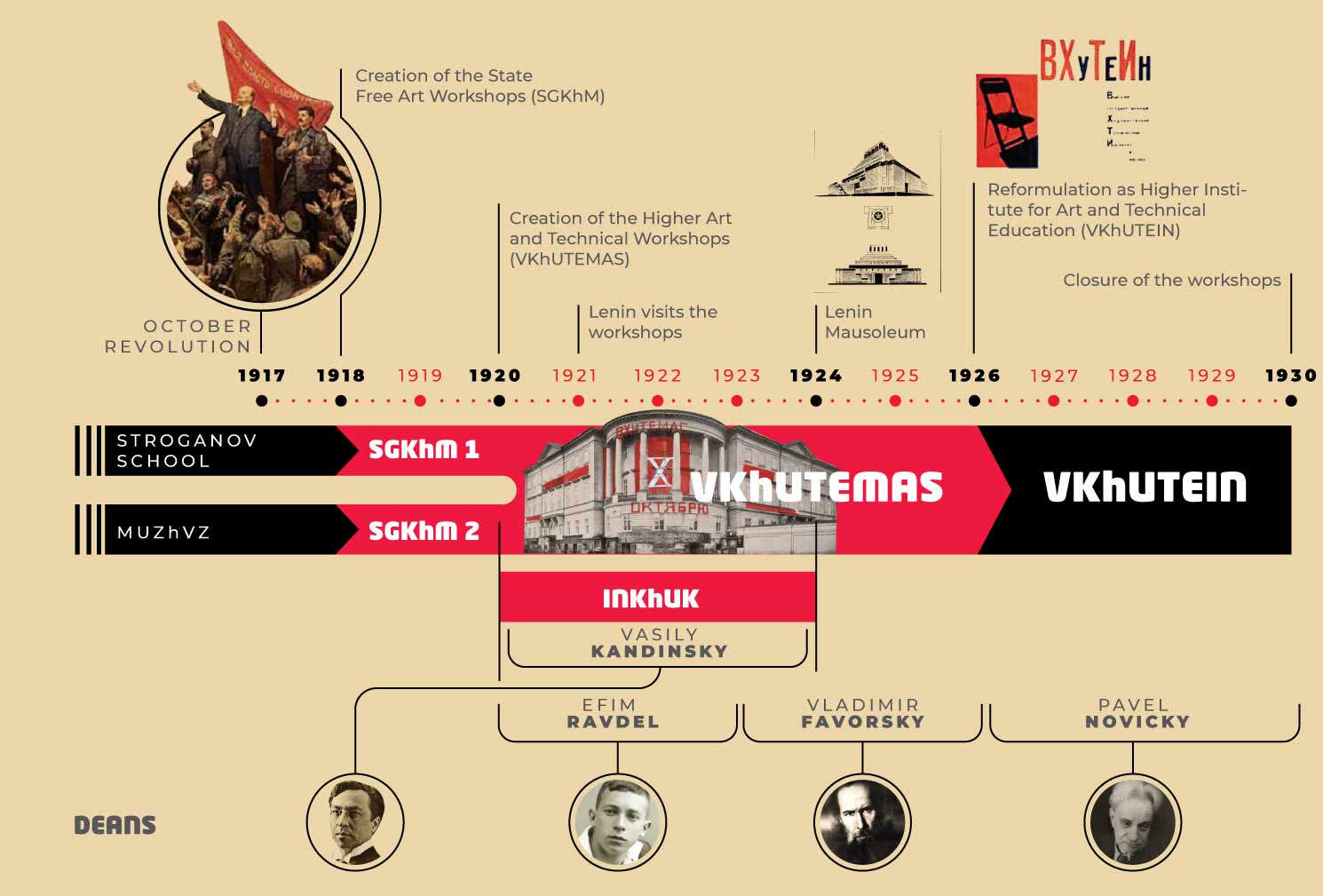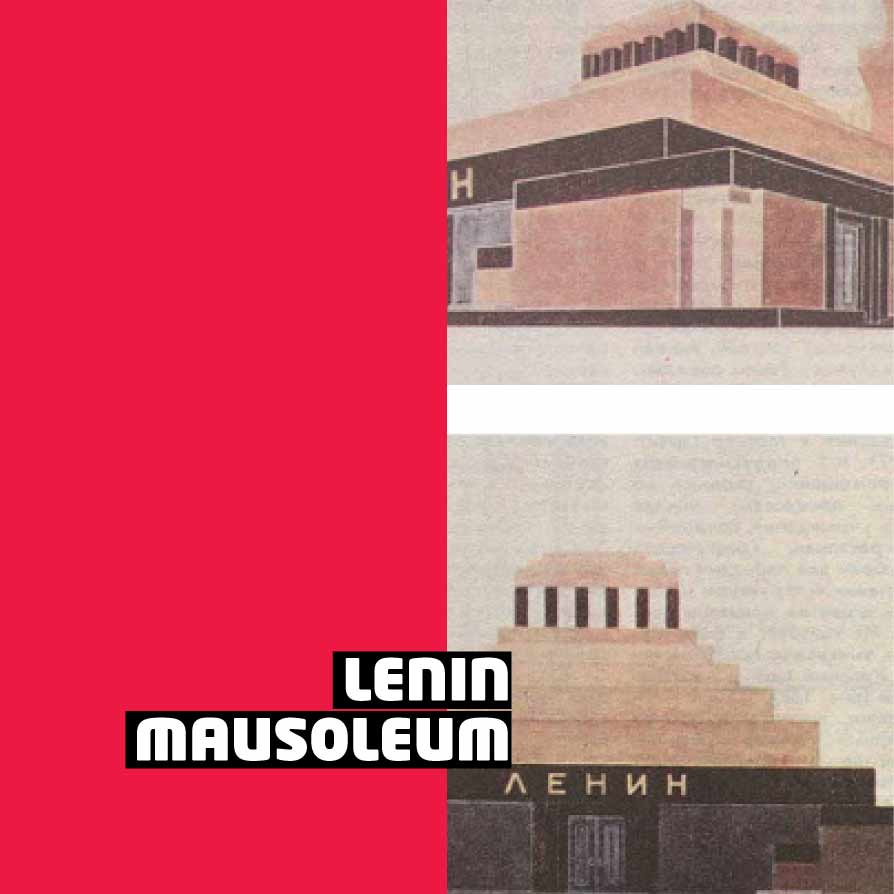
In 1920, a mere three years after the October Revolution, Soviet authorities launched the Higher Art and Technical Workshops: VKhUTEMAS. Like other movements around the world, the artistic vanguards in Russia tried to bring art closer to industrial production. Similarly to the German Bauhaus or the Dutch De Stijl, the VKhUTEMAS rejected the conventional art limits and tried to bring it back to common spaces. Nevertheless, the radical transformations that gripped Russian society in those early revolutionary years allowed the VKhUTEMAS to take this endeavor much further than its western counterparts.
For example, the VKhUTEMAS was at least ten times larger than the Bauhaus (in 1925 it had 1445 students compared to just 127 at the Bauhaus). But its goals were likewise more ambitious. At the VKhUTEMAS art was not just meant to intervene in social dynamics, it was meant to transform them. The first working class government in history was taking its first steps in Russia, and the school played an active role in designing this utopia. No aspect of this new life, big or small, was free from its creative gaze: from Malevich’s kettles to Stepanova’s factory gear to Krutikov’s flying cities. During its 10 years of existence, the VKhUTEMAS made key contributions towards imagining new paradigms and turning needs and demands of the rising Soviet society into reality.

The VKhUTEMAS, which had already been operating for several months, was officially created on November 29, 1920 through a decree from the Council of People’s Comissars signed by Lenin himself. Though this was after the foundation of the German Bauhaus, it must be said that the Soviets had begun a profound process of changes in art education years before. The First Creative Education Reform, pushed by Lunacharsky, called on artistic vanguards to design new teaching programs.

As expected, this reform gathered a large chunk of the experimental spirit of the early XX century Russian vanguards as well as the Bolsheviks’ revolutionary principles. As a result, the Stroganov School of Applied Arts and the Moscow School of Painting, Sculpture and Architecture became the Free Art Workshops. A 1920 decree created the VKhUTEMAS, continuing this evolution and incorporating the Free Workshops under a single program. The INKhUK, under Kandinsky’s direction, was likewise created in 1920 and lasted until 1924. A reorganization took place in 1926, with the school renamed as VKhUTEIN. It closed down in 1930.
The education program was tremendously innovative and set many of the bases for modern art schools. The VKhUTEMAS curriculum did away with conventional art boundaries and combined its production with other disciplines and new technologies.
Students went through an initial two year cycle to go over common concepts such as volume, space, graphics and color. For the specialization, which took three more years, the school was split in two departments (production and theoretical), with eight colleges between them:

Not just that, at the VKhUTEMAS learning was not seen as a mere transmission of knowledge but rather as a key part of the creative process. As a result, it was considered an crucial element for the transformation of society. That is why the VKhUTEMAS workshops conceived and created projects that would play a direct role in the molding of the new Soviet society. For instance, Rodchenko and his students designed furniture for workers’ clubs; Stepanova produced new briefs to make factory work more comfortable; Lavinsky envisioned cities over piers to maximize the use of urban soil for agriculture; Schusev designed the Lenin Mausoleum; and Krutikov envisioned flying cities.
After operating for 10 years, the school dissolved in 1930. But its professors and students moved to other schools and the VKhUTEMAS’ influence was felt for decades. It is safe to say that many of the modern notions of art, graphic design, industrial design and architecture were conceived and developed at the VKhUTEMAS. But furthermore, one hundred years on, much of what was envisioned there, this horizon where artistic work intersects with new social relations, remains an open challenge for artists nowadays.
The school became one of the world’s main centers for artistic experimenting. In particular, the constructivist movement had a major operating theater in the VKhUTEMAS. Rodchenko, for example, was at the head of the carpentry and metalwork workshops. Furthermore, the VKhUTEMAS also fostered important figures in objectivism, suprematism, cubism, non-conformism and even neo-classicism.
Sources:
RÓDCHENKO, A. Experiments for the future.
BOKOV, A.









